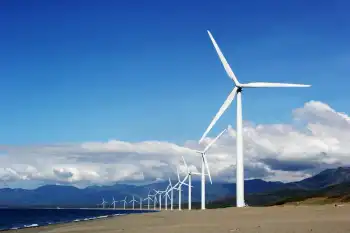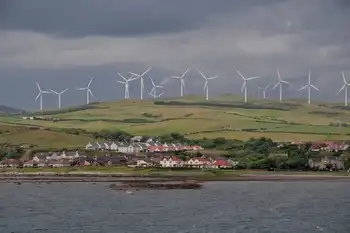Nepal building storage hydropower projects
NEPAL - The Nepalese government has decided to expedite the construction of storage-based hydropower projects in an effort to bridge the growing demand-supply gap in the nation's power sector.
The projects include the 600-megawatt MW Budhi Gandaki and the 127-MW Upper Seti projects, both of which have been delayed several times. Nepal currently operates only two storage-based hydropower plants.
In May this year, the Nepal Electricity Authority NEA floated a request for proposal RFP for the construction of the Budhi Gandaki project. The RFP was sent to several companies, including EDF Hydro Engineering Centre, PTC India Limited, and CEC Projects Limited & CEC Consortium. Development of the Upper Seti hydropower plant, to be set up near Damauli, is estimated to cost about $328 million. The electricity generated from this facility will be linked through a 220-kilovolt kV transmission line to the proposed New Bharatpur substation. Construction on both projects is likely to begin in 2012.
Nepal relies heavily on hydroelectric projects, especially run-of-the-river facilities, for electricity generation. Experts have observed that, during monsoons, these projects are able to reach their installed capacity levels. However, during the dry months, the country's hydropower plants generate less than 16.66 of their installed capacity.
According to Jibendra Jha, the executive director of NEA, reservoir-based power projects will serve as a good stopgap arrangement until new power plants are commissioned. Rajendra Kishor Chhetri, the under secretary for the Ministry of Energy, said that storage-based power plants will help reduce power outages and help Nepal meet its peak-hour power demand. Electricity demand in Nepal is at its peak during 5 a.m. to 7 a.m., and 7 p.m. to 9 p.m. Chhetri added that the country's location and topography are ideal for reservoir-based hydropower plants.
Nepal has been facing an acute power crisis, with an estimated outage of about 14 hours per day. According to the Ministry of Energy, the power cuts are expected to continue for the next five years. By 2014, electricity outage could increase to 20 hours per day. According to recent media reports, the NEA has decided to increase weekly power cuts from 38.5 hours to 56 hours. The government is now focusing on increasing the country's installed capacity.
Earlier, the NEA had submitted a proposal to increase the import of power from India and to construct new thermal power projects. However, the government rejected the proposal, stating that thermal power was expensive and maintenance of such plants and their equipment was costly. Lack of robust infrastructure and transmission lines has made higher imports from India difficult. Presently, Nepal purchases 130 MW from India. India and Nepal are proposing to construct a 300-kilometer network linking Buhabi, Hetanda and Butwal, and a 130-kilometer transmission line connecting Mujaffarpur and Dhalkebar. However, there has been little progress on these projects.
Sources indicate that in the last 10 years, there has been no increase in Nepal's electricity tariffs. This has adversely impacted NEA's revenues and its ability to fund new power and infrastructure projects. The country's transmission and distribution network is weak and records power losses of about 26. A report recently released by NEA indicates that nearly 43.4 of Nepal's population has no access to electricity of this, about 50 is in rural areas. Nepal's average annual power consumption is about 86 kilowatt-hours kWh, which is reportedly 157 times lower than the average annual power consumption in the U.S. In 2009, the country's installed power-generating capacity was about 700 MW.
With the country's electricity demand growing at an annual rate of 11, the Public Accounts Committee has issued a directive to the Ministry of Energy to develop a detailed plan to improve Nepal's precarious energy sector. In association with the Power Grid Corporation of India PGCIL, the government is developing a master plan to augment and expand its power infrastructure. The master plan proposes to add cross-border transmission links and electricity corridors, and to strengthen the existing network.
In the next few years, NEA has planned new hydropower plants with a combined capacity of 5,000 MW. There are plans to build 3,280-kilometer transmission network to connect these projects to the national grid. Presently, NEA operates a 1,980-kilometer transmission and distribution network.
Related News

Canadian power crews head to Irma-hit Florida to help restore service
TORONTO - Hundreds of Canadian power crews are heading to Florida to help restore power to millions of people affected by Hurricane Irma.
Two dozen Nova Scotia Power employees were en route Tampa on Tuesday morning. An additional 175 Hydro One employees from across Ontario are also heading south. Tuesday to assist after receiving a request for assistance from Tampa Electric.
Nearly 7½ million customers across five states were without power Tuesday morning as Irma — now a tropical storm — continued inland.
In an update On Tuesday, Florida Power & Light said its "army" of crews had already restored power to 40…




